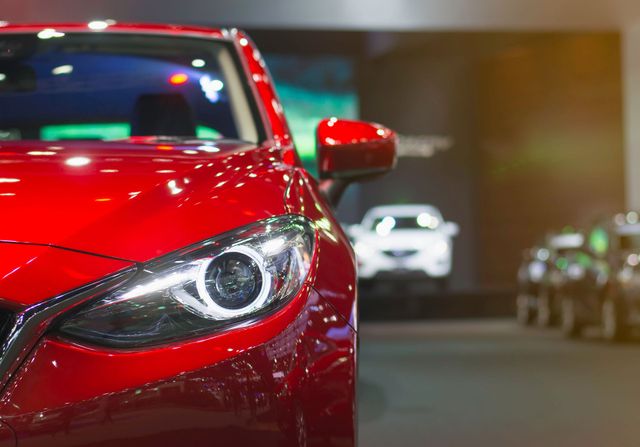Car Paint Protection: Preserving Your Vehicle’s Shine and Value
Wiki Article
Your car is more than just a means of transportation—it’s a reflection of your personality and a significant investment. However, everyday exposure to environmental elements like sunlight, rain, road debris, bird droppings, and tree sap can gradually damage your vehicle’s paintwork. Over time, this exposure leads to fading, scratches, and a dull appearance.
That’s where car paint protection comes in. Designed to preserve the factory finish, paint protection solutions are increasingly popular among vehicle owners who want to maintain their car’s showroom shine and protect its resale value.

What is Car Paint Protection?
Car paint protection refers to a range of products and techniques used to shield your vehicle’s paint from damage caused by external factors. These include high temperatures, UV rays, chemicals, road salts, and more. Whether you drive daily or occasionally, investing in paint protection ensures your car maintains its gloss and color while requiring less frequent cleaning or repainting.
Types of Car Paint Protection
There are several types of paint protection available today, each with its own benefits, durability, and cost:
1. Paint Protection Film (PPF)
Paint Protection Film—also known as clear bra—is a transparent, self-healing polyurethane film that’s applied over your vehicle’s painted surfaces. It acts as a barrier against scratches, rock chips, and stains, while also offering excellent UV resistance. PPF is especially effective for high-impact areas like bumpers, hoods, mirrors, and door edges. While it tends to be more expensive, it can last up to 10 years when professionally installed.
2. Ceramic Coating
Ceramic coating is a liquid polymer that chemically bonds to your vehicle’s paint. Once cured, it forms a hydrophobic (water-repellent) layer that prevents dirt, water, and contaminants from sticking to the surface. It enhances the depth and gloss of your paint and offers resistance against UV rays, chemical stains, and minor scratches. Ceramic coatings typically last 2–5 years with proper maintenance.
3. Wax and Paint Sealants
Wax and sealants are traditional paint protection products that create a temporary layer over your car’s paint. While they offer some shine and water repellency, their effects are short-lived, usually lasting a few weeks to a few months. They're easy to apply and more affordable, making them ideal for those who prefer DIY care or want short-term protection.
4. Graphene Coating
A newer innovation, graphene coating is similar to ceramic coating but uses graphene nanoparticles. It offers even greater durability, heat resistance, and slickness. Graphene coatings are becoming popular for their ability to resist water spots and reduce surface heat more effectively than ceramic coatings.
Benefits of Car Paint Protection
✔ Long-Lasting Shine
Paint protection solutions keep your vehicle looking brand new by maintaining the depth and gloss of the original paint finish. It reduces the need for frequent waxing or polishing.
✔ Resistance to Scratches and Chips
PPF and ceramic coatings can absorb or deflect minor abrasions and impacts, protecting against swirl marks, stone chips, and small scratches.
✔ UV Protection
Ultraviolet rays from the sun can cause paint to fade and oxidize over time. Paint protection acts like a sunscreen, preserving the vibrant color of your car.
✔ Easier Cleaning and Maintenance
A coated or film-protected car repels dirt, mud, and water more easily. This means less time spent washing and a cleaner car for longer.
✔ Higher Resale Value
Vehicles with well-maintained exteriors typically fetch better resale prices. Paint protection ensures your car looks its best even after years of use.
Choosing the Right Paint Protection
When selecting a paint protection method, consider the following factors:
• Budget: Paint protection films are generally more expensive than ceramic coatings or wax.
• Usage: If you drive frequently or off-road, a more durable solution like PPF may be better suited.
• Climate: Harsh sun exposure calls for strong UV protection, while wet or snowy environments benefit from water and salt repellency.
• Maintenance Preference: Ceramic coatings offer low-maintenance shine, while wax requires frequent reapplication.
DIY vs. Professional Application
While some products like wax and entry-level ceramic sprays can be applied at home, high-quality ceramic coatings and PPF are best handled by professionals. Professionals ensure proper surface preparation and precise application, ensuring maximum performance and longevity of the product.
Final Thoughts
Car paint protection is an essential step in maintaining your vehicle's appearance and value. Whether you choose a traditional wax, a high-tech ceramic coating, or a durable PPF, these protective measures offer peace of mind and long-term savings.
In today’s world, where appearance and longevity matter more than ever, protecting your car’s paint is a smart and practical decision. It’s not just about aesthetics—it’s about taking care of an asset you value. Visit our website https://www.smetlink.com/ for more details. Report this wiki page